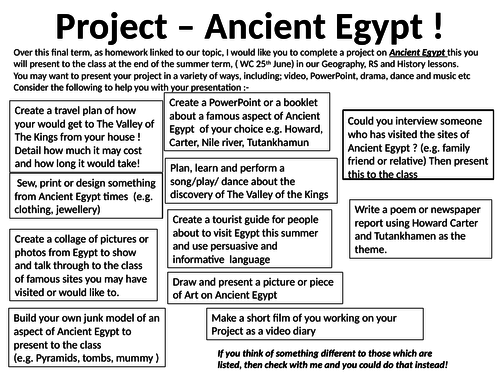
How do pyramids help us know so much about life in Ancient Egypt? Ancient Egyptians were buried with their belongings and the tomb walls were painted with scenes from the dead persons life. By examining the objects (artifacts) and paintings in the tombs, we have been able to understand a lot more about life in Ancient Egypt Nov 29, · Mesopotamia and Ancient Egypt were two of the earliest known civilizations. While maintaining individual identities, they shared several similarities Discover facts about Ancient Egypt below or skip to our facts about modern-day Egypt. Facts about Ancient Egypt. 1) Most Ancient Egyptian pyramids were built as tombs for pharaohs (rulers of Ancient Egypt) and their families. To date, over pyramids have been discovered in Egypt
Discover Ancient Egypt
What is the Calendar of Lucky and Unlucky Days? Answer: An ancient Egyptian horoscope. In ancient Egypt, keeping their eye on homework help ancient egypt future was an important part of daily life. Religion played an enormous role in their daily lives. The ancient Egyptians believed in over 2, gods. They believed in magic and in spells.
They believed they received messages from the gods in their dreams and consulted with dream interpreters to homework help ancient egypt what their dream meant.
Today, you homework help ancient egypt check your horoscope, your future, online or in a newspaper. In ancient times, people consulted The Calendar of Lucky and Unlucky days. If they saw their future had an unlucky day, they headed to the marketplace to buy a spell to change their fate. They believed they had to do homework help ancient egypt good deeds in their life to assure themselves a place in the netherland, their afterlife. It was all part of their religion.
Everyone had a job in ancient Egypt. Most ancient Egyptians worked very hard, but they left time each day for play and to spend time with their families. Family life was important. Children were the heart of the family. If a couple could not have a child, they adopted a child.
Children were taught to be kind and honest, to respect their parents, to help with the family business, and to care for the elder members of their family. Everyone ate well in ancient Egypt, homework help ancient egypt. Everyone bathed daily; the rich bathed in soaking tubs with scented soap and the poor bathed in the Nile.
All Egyptians were very clean. Ancient Egyptians had their own homes. They had comfortable furniture. In the movies, you often see the ancient Egyptian civilization presented as a dark and spooky place. The people seem to be in love with death. But the ancient Egyptians were not like that at all. They loved color. And they loved life.
They enjoyed poetry and art and music. They held parties, homework help ancient egypt. They loved making grave goods to place in their family tomb. They wore colorful jewerly and flowery perfume. What was life like for the ancient Egyptians?
What did ancient Egyptians look like video, animated. Homes in Ancient Egypt. Jewelry and Perfume. Makeup, Kohl - Men, Women, Children. Table Manners in Ancient Egypt. Women in Ancient Egypt. Children in Ancient Egypt. Occupations, Professions, Jobs, homework help ancient egypt. Farmers: Compare a farmer's life to a nobleman's life in Ancient Egypt. Ancient Egyptian Religion - Gods and Goddesses. Egypt Life story and game. My Daily Life in Ancient Egypt - An Original Story written by a former student of ours now a teacher!
when she was in our 6th grade classroom. A Day in the Life. These are questions we created about Ancient Egypt that we believe you might find on a homework assignment, a unit quiz or an exam, homework help ancient egypt. Test yourself.
See if you remember the answer or guess the answerthen click the "Show Answer" button under each question to see if you are right! Ancient Egypt Daily Life. The Nile River. Gifts of the Nile. Boats and Square Sails. Two Lands, Unification, King Menes. The Three Kingdoms. Hieroglyphics, Rosette Stone. Government Officials. Soldiers and the Military. Trade and Economy. Paying for Goods. Time Keeping and Shadow Clocks. Egyptian Calendars. Ancient Egypt Maps. Ancient Egypt Timelines.
The Neighbors: Kush and Nubia. Women could run a business. Children were cherished. Marriage and Divorce. Food - no one went hungry. The Marketplace. Table Manners. House of Life. House of Books.
Medicine and Doctors. Craftsmen and Merchants. Farming and Farmers. Social Classes. The Ankh - Key of Life. Ancient Egyptian Art. when she was in Mr. Donn's 6th grade class.
Scarab Beetles, homework help ancient egypt. Many Religious and Joyous Festivals. Book of the Dead. Bark and Bark Shrines. Preparing for the Afterlife. Weighing of the Heart. Canopic Jars also spelled Canpic. Sequence Chain: Mummification. Make a Mummy interactive. Sequence Chain: Funerals. The Ba and the Ka. King Tut's Tomb. Howard Carter. Grave Robbers. The Mummy's Curse. Five Themes of Ancient Egypt Geography. Vocabulary Lists and Interactives with definitions.
The Impact of the Nile River in Ancient Egypt
, time: 4:32Teacher Worksheets | History, Social Studies, Science & Geography

My Daily Life in Ancient Egypt - An Original Story written by a former student of ours (now a teacher!) when she was in our 6th grade classroom. A Day in the Life These are questions we created about Ancient Egypt that we believe you might find on a homework assignment, a unit quiz or an exam Ancient Egypt was one of the earliest and longest-lived civilisations, spanning almost years of history. Explore the world of Ancient Egypt by playing our games Nov 29, · Mesopotamia and Ancient Egypt were two of the earliest known civilizations. While maintaining individual identities, they shared several similarities
No comments:
Post a Comment